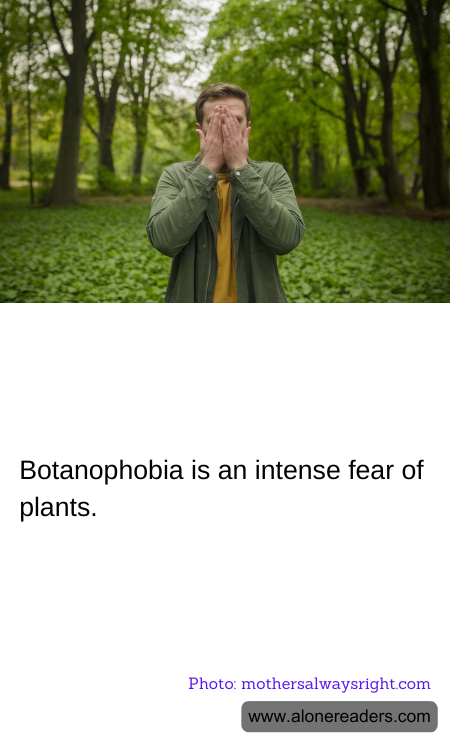
Botanophobia, derived from the Greek words 'botane' meaning grass or pasture, and 'phobos' meaning fear, is a relatively rare phobia that involves an irrational and excessive fear of plants. This fear can be triggered by a variety of plant-related scenarios, such as touching plants, seeing plants in certain surroundings, and in some extremely acute cases, even thinking about plants. People suffering from botanophobia often experience immediate anxiety or panic when exposed to plants. This can manifest as sweating, trembling, a rapid heartbeat, or even a full-blown panic attack.
The origins of botanophobia can be varied. For some, a traumatic or negative experience with plants in childhood, such as an injury from thorns, a bee sting while near flowers, or severe allergies to certain plants, can trigger this phobia. Others may develop the fear based on stories or teachings that emphasize the dangers of certain plants, such as those that are poisonous or those found in hazardous environments. Cultural influences and familial attitudes towards nature can also play a significant role in fostering such fears.
Treatment for botanophobia generally centers on psychotherapy. Cognitive-behavioral therapy (CBT) is particularly effective, as it helps individuals alter and reframe the negative thoughts that lead to their fear. Exposure therapy, a form of CBT, gradually acclimatizes the person to plants through controlled exposure, which can help reduce the fear response over time. Sometimes, medications like anti-anxiety drugs or antidepressants may be used in conjunction to help alleviate symptoms while a person undergoes therapy.
Additionally, relaxation techniques such as mindfulness, meditation, and deep breathing exercises can aid in managing the anxiety symptoms related to botanophobia. Support groups or online forums can also provide a platform for people with this phobia to share their experiences and recovery strategies, fostering a sense of community and understanding.
Understanding botanophobia is crucial, not only for those who suffer from it but also for their friends and family members, so they can provide appropriate support. Recognizing the signs early and seeking professional help is the key to overcoming this intense fear of plants, enabling individuals to enjoy all aspects of nature without undue distress.